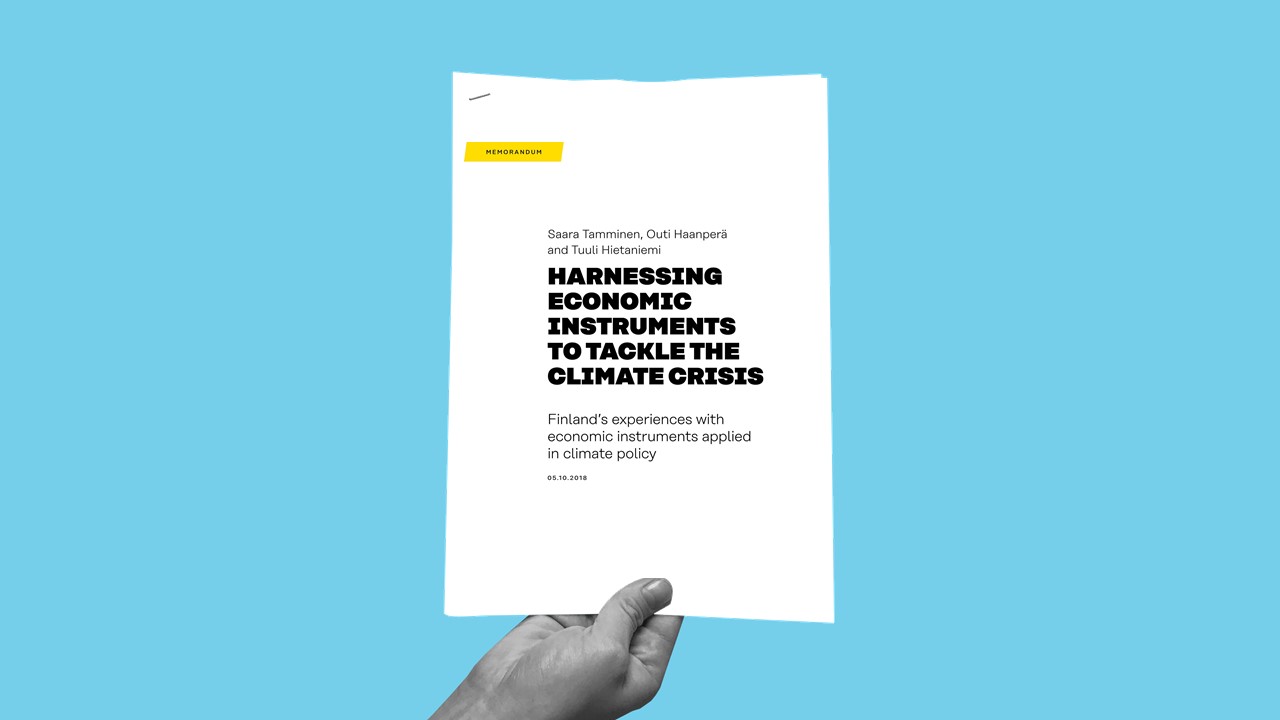Why?
Considering the fast pace required to reduce GHG emissions, the most effective policies or policy packages are required to accelerate emission reductions. Economic instruments can efficiently reduce emissions and raise fiscal revenue while supporting innovations, but good policy design is essential.
How?
This brief report summarises the main national economic instruments used in Finland that aim to reduce greenhouse gas emissions and what we know of their (potential) impacts on emissions, fiscal balances and innovations.
What?
The list of instruments is not comprehensive but includes the most important instruments.
Tax instruments and payments
- CO2 tax for motor fuels, coal and gas
- Energy content tax (also electricity)
- Annual vehicle and new car sales tax
- Waste tax and excise duty on beverage packaging
- Oil waste duty and oil damage duty
Subsidies and other instruments
- Blending requirement (10% biofuel) for motor fuels
- Feed-in tariff for renewable energy
- Energy Aid programmes
- Agri-environmental support
A summary of the report was made for the annual meetings of the International Monetary Fund (IMF) and the World Bank held 12-14 October 2018 in Bali.
















Recommended
Have some more.